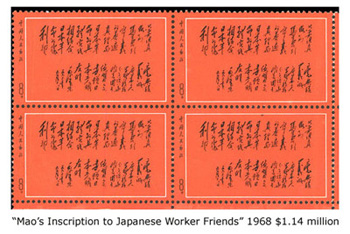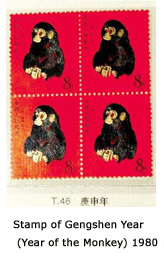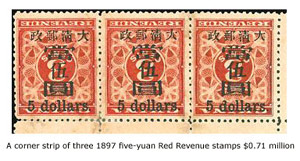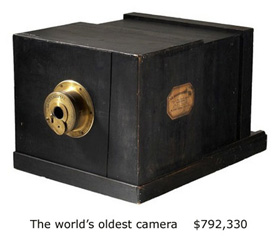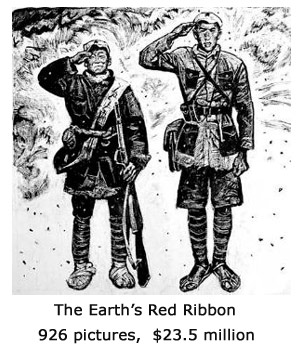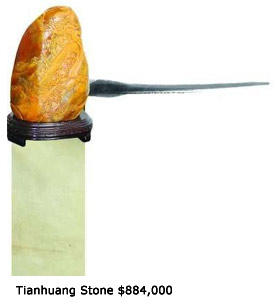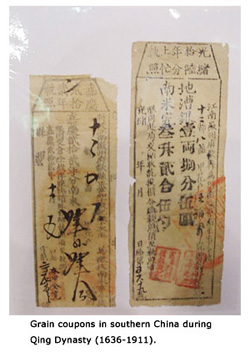|
 |
|
Editor's note: Have you ever imagined that one day your old toys would bring you wealth? As investors have turned away from the property market due to restrictive policies, old stamps, antique cameras, lianhuanhua and even stones are becoming hot investments. Some of these things have sold for millions through China's blooming auction market. |
|
Stamps |
Old stamps set records at auction Two old stamps sold for more than HK$600,000 at an auction in early March hosted by Zurich Asia, a leading stamp auction house, The Wall Street Journal reported. At a standing-room-only auction held in late February, Interasia Auctions sold more than 3,000 sets for a value of HK$98 million. Other valuable stamps included a corner strip of three 1897 five-yuan Red Revenue stamps, which sold for HK$5.5 million. Interasia Co-founder Jeffrey Schneider said, Chinese collectors have an affinity for red stamps. The Red Revenue set of three represents the most popular among collectors of Chinese stamps because of the red color, the fact that they are from the Qing Dynasty (1644-1911) and also because of their fascinating history.[Full story]
|
|
Antique camera collection Most tourists love photography.While camera technology continues to develop, many travel-savvy photographers may have never expected that antique cameras have become the focus of attention. But antique cameras are not used for shooting pictures. Instead, they are treasured by collectors and investors from around the world. At a camera auction in 2007, a 1923 Leica was purchased at a price of 3.7 million yuan, earning it the title of the world’s most expensive small camera. This portable black camera was the only one, among the 21 small film cameras produced in 1923, engraved with “Germany” in its body. It was also the first Leica designed for export. In the same year, a camera which was announced to be the world’s oldest sold for $792,330. In China, where the camera collection market began growing later than in other countries, it is not rare to see antique cameras sold at auctions for tens of thousands of yuan. [Full story]
|
Cameras
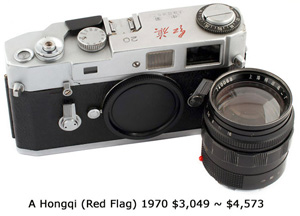 |
|
Comics
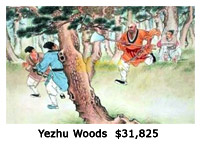
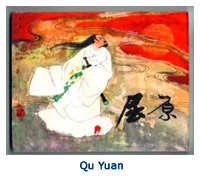 |
Chinese comics good investment choice Many Chinese born before the 1980s still have fresh childhood memories of reading lianhuanhua, the Chinese version of comics. But few of them expected these "small books", in terms of both size and readers' age, to be on high demand among today's collectors and investors. At a lianhuanhua auction held last April at Panjiayuan, a famous flea market in Beijing, more than 300 items were auctioned for a total of 178,890 yuan ($27,270). Some of the most precious items sold for well over 10,000 yuan. In many ancient books markets around China, lianhuanhua stalls have designated areas. In Panjiayuan alone, there are more than a dozen stalls selling lianhuanhua. According to a previous media report, a lianhuanhua store in Beijing can have annual turnover of 3 million yuan, on average, with trade volume of 150,000 books. [Full story] |
|
Liquor
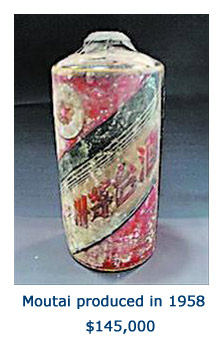 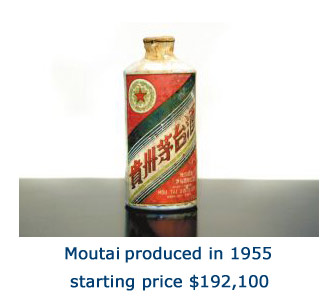  China's national liquor Moutai hot on auction
Over one hundred bottles of bonded Moutai, China's national liquor served at official occasions and State banquets, were sold for a total of 5.2 million yuan ($791,000) at a liquor auction held in Shanghai on Sunday. The auctioned items were mostly brewed in the 1970s and 1980s and have been collected by individuals. The costliest item at Sunday's auction was a bottle of Five Star Moutai, bottled in 1955, that was listed for about 1.3 million yuan. But the price was set too high to attract any bidders, said Fan Ganping, a representative of Shanghai International Commodity Auction Co Ltd. Moutai, brewed in a small town in Southwest Guizhou province, has been considered the country's top brand and a symbol of status for decades. [Full story] |
|
Furniture
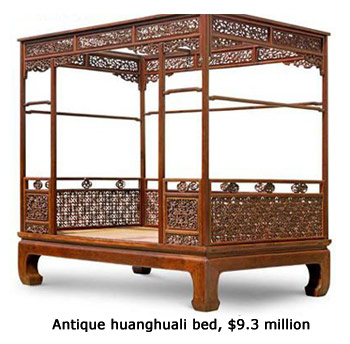 Huanghuali furniture creates new craze
Huanghuali, a rare species of rosewood, has become a favorite for Chinese antique furniture collectors. A huanghuali chair from Ming dynasty was auctioned at 62 million yuan ($9.3 million) on Dec 12, setting new record for its category. But experts warned that antique furniture has risks for both collectors and investors. [Full story] |
Musical Instrument An auction price that's sweet music to the ears A rare Song Dynasty (AD 960-1279) guqin, a traditional plucked seven-stringed zither, sold for a record 136.64 million yuan ($20.52 million) at Beijing Poly's autumn auction on Dec 4. It is the first Chinese instrument to fetch an auction price of more than 100 million yuan. The last record for this kind of musical instrument was set in 2009 at China Guardian Auctions when a Ming Dynasty (1368-1644) guqin titled Yuelu Zhiyin went under the hammer for 28.14 million yuan. Since 2003, when a guqin named Remnants by the Mahatma (Dasheng Yiyin) crafted in the Tang Dynasty (AD 618-907) sold for 8.91 million yuan ($1.34 million), the guqin has been attracting much attention in the Chinese auction market. [Full story] |
 |
|
Stones
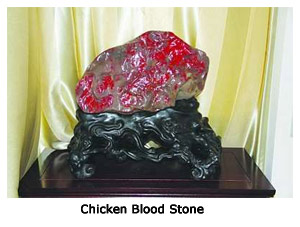
|
Stones inspire new collection fervor Diamonds are a woman's best friend, but now men seem to have found companions in stones too, only they favor much larger ones. In an auction specializing in stones, which was held in Nanjing, Jiangsu province on March 20, 97 items were auctioned for 6.6 million yuan ($1 million), with a 1560-gram Tianhuang stone sold for 5.8 million yuan, the highest price of the day. Stone sculpture and collection have a long history in China, and these stones are called "qishi" in Chinese, literally translated as "strange stones." It can be traced back to more than 3,000 years ago and has long been popular among high-brow Chinese. It is believed that they are well suited to Chinese aesthetics: the beauty of nature itself. Now the tradition has become even more popular as Chinese get richer. More people have spare money to pursue their hobbies and some want to invest their money in unusual areas. [Full story] |
|
China's old ration coupons have a new value Food ration coupons, which were a product of China's planned economy decades ago, today have resurfaced in the midst of the country's booming market economy as popular collectors' items. The coupons, known as liangpiao in Chinese, were issued by the government in the 1950s when food and other commodities were scarce. They were abolished in the 1990s, following the growth of industrial and agricultural production sectors. Today, they have become hot items on auction markets and are highly sought after by collectors and investors. [Full story] Picking up pieces of old memeries at coupon exhibition People who tour Beijing Aquarium are surprised by a special exhibition set in its main gallery displaying a variety of commodity grain coupons about the size of a name card. The exhibition, collected by the aquarium's senior member Zhang Wei, a 48-year-old ration coupons enthusiast, is made up of 10 billboards with over 500 culture pieces issued by the whole 32 provinces and cities, ranging from general coupons, local coupons and military ration coupons. The ration system got started in China in 1955 when commodities were scarce during the early days, and loosened its control in 1990s, following the growth of industrial and agricultural production.[Full story] |
Coupons
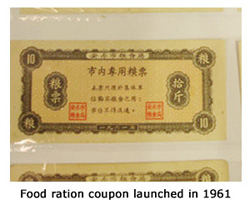
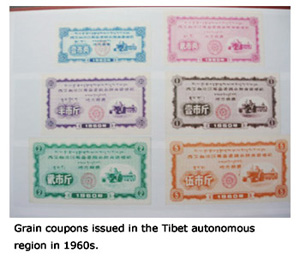 |
